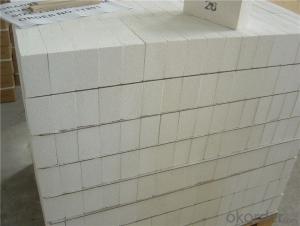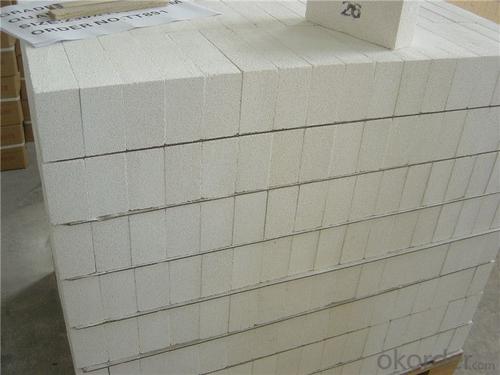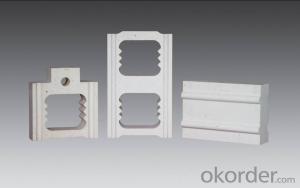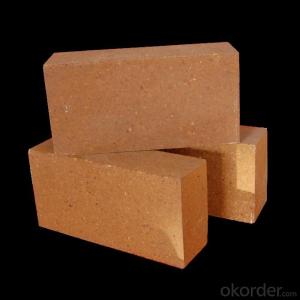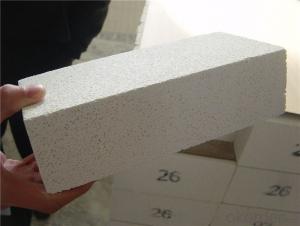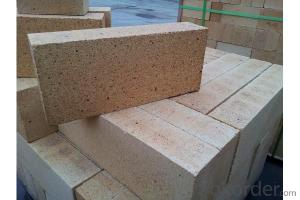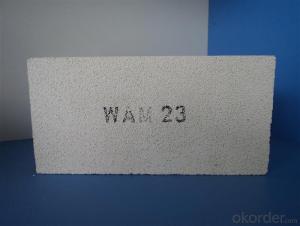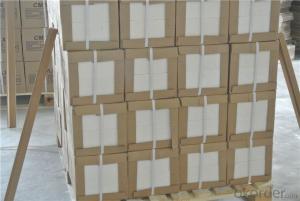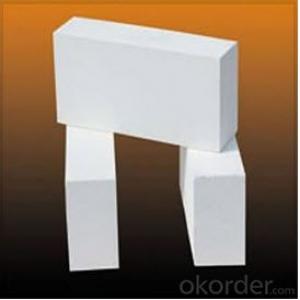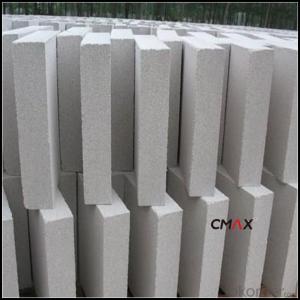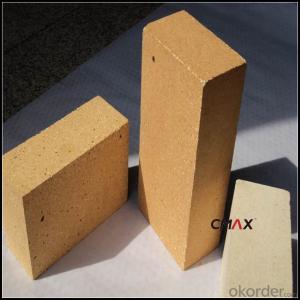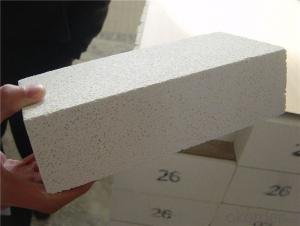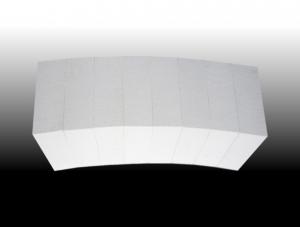Insulating Fire Brick - High Temperature Fireproof Fire Clay Refractory Heat Insulation Bricks for Thermal Equipment
- Loading Port:
- Shanghai
- Payment Terms:
- TT OR LC
- Min Order Qty:
- 1 m.t.
- Supply Capability:
- 1000 m.t./month
OKorder Service Pledge
OKorder Financial Service
You Might Also Like
Thermal Insulation Fire Clay Brick
Refractory brick is a block of refractory ceramic material used in lining furnaces, kilns, fireboxes, and fireplaces.
We provide high quality Refractory Fire Bricks that are used on wide range in the various industries like Cement, Glass and Steel. Refractory Fire Bricks are provided as per the quantity and specifications required by the customers. We provide an extensive range of Refractory Fire Bricks at reasonable prices that depend upon the quantity ordered.
Application
Insulating Fire Brick are used for the lining of converter, alternating current arc furnace, direct Current arc furnace and the ladle slag line, etc.
Company Advantage
(1)Long Insulating Fire Brick manufacture history: 25 years manufacturer
(2)Advanced equipment
(3)Diversification of production standards: ISO ANSI FEPA JIS ASTM
(4)Flexible payment: T/T L/C D/P D/A
(5)Professional marketing team and after-sale service
Insulating Fire Brick main feature:
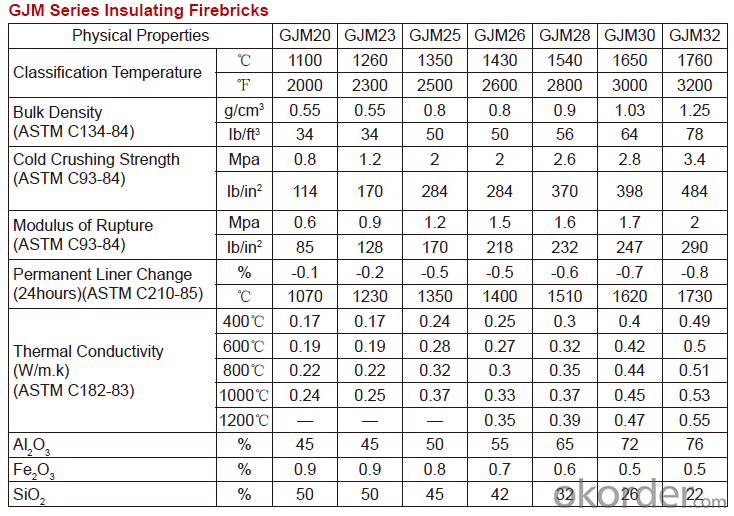
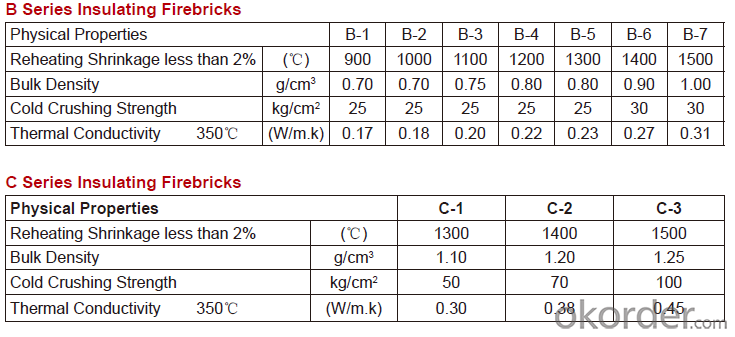
Equipment
1 unit of Ceramic Abrasive (SG Abrasive) pilot production line
2 units of Compact grain Abrasive pilot production lines
1 unit of high-end coated abrasives (abrasive cloth) production line
2 units of Boron Carbide production lines
3 large flexible crushing and sieving lines for grit production lines
6 units of 5000KVA-10000KVA dumping type electric arc furnaces for Brown Fused Alumina fusion
Q1 What’s the transport method?
A1 FCL delivery goods with wooden pallet or wooden case by sea; If LCL delivery, must with wooden case; Sometimes need open top, flat rack or bulk cargo.
Q2 What’s the required payment term?
A2 Generally 30% TT as the prepayment, 70% TT before delivery. If need, 100% Irrevocable Letter of Credit or negotiation.
Q3 Which country are our products exported to?
A3 Apart from entire Chinese market, the US, Russia, Japan, Korea, Australia and some Southeast Asian Nations.
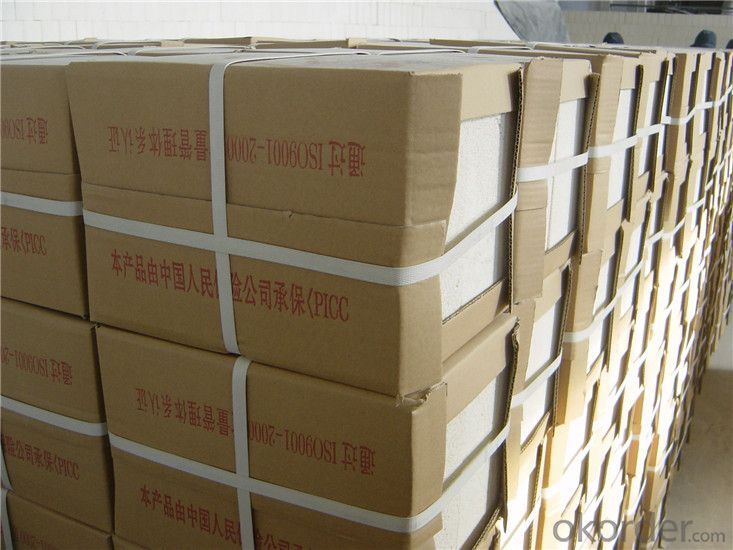

- Q: Do insulating fire bricks have a low coefficient of thermal expansion?
- Yes, insulating fire bricks typically have a low coefficient of thermal expansion.
- Q: What is the typical thermal expansion coefficient of an insulating fire brick?
- The typical thermal expansion coefficient of an insulating fire brick can vary depending on the specific material composition and manufacturing process. However, in general, insulating fire bricks have a low thermal expansion coefficient compared to other types of bricks. The thermal expansion coefficient is a measure of how much a material expands or contracts when subjected to changes in temperature. Typically, the thermal expansion coefficient of an insulating fire brick ranges from 5 to 8 x 10^-6 per degree Celsius (5-8 μm/m°C). This means that for every degree Celsius increase in temperature, the insulating fire brick will expand by approximately 5 to 8 micrometers per meter of length. The low thermal expansion coefficient of insulating fire bricks is desirable in applications where temperature changes are frequent and significant. This property helps to minimize the risk of thermal stress and cracking, ensuring the longevity and performance of the insulating fire brick in high-temperature environments. It is important to note that the specific thermal expansion coefficient may vary based on the manufacturer, the type of insulating fire brick, and the temperature range in which it is intended to be used. Therefore, it is recommended to consult the manufacturer's specifications or technical data sheets for accurate and detailed information regarding the thermal expansion coefficient of a specific insulating fire brick.
- Q: Can insulating fire bricks be used in residential construction?
- Insulating fire bricks, also known as refractory bricks, are primarily designed for use in high-temperature applications such as industrial furnaces and kilns. They are specifically engineered to withstand extreme heat, have low thermal conductivity, and provide excellent insulation properties. While insulating fire bricks can be used in residential construction, they are not typically the go-to choice for such applications due to several reasons. Firstly, insulating fire bricks are significantly more expensive compared to other types of construction materials available in the market. This cost factor often makes them less desirable for residential projects, where budget considerations are crucial. Secondly, the primary purpose of insulating fire bricks is to provide thermal insulation in high-temperature environments. In residential construction, the need for such extreme insulation is relatively rare. Standard construction materials like concrete blocks, bricks, or insulation boards can usually provide adequate insulation for residential buildings. Lastly, insulating fire bricks are not as structurally strong as other construction materials, which may make them less suitable for load-bearing applications in residential construction. These bricks are typically used as a secondary layer or lining in industrial furnaces, rather than as a primary building material. In conclusion, while insulating fire bricks can technically be used in residential construction, they are not commonly employed due to their high cost, limited applicability, and structural limitations. Residential construction typically relies on more cost-effective and versatile materials to meet insulation and structural requirements.
- Q: Do insulating fire bricks have a low thermal conductivity?
- Yes, insulating fire bricks have a low thermal conductivity.
- Q: Can insulating fire bricks be used to build pizza ovens?
- Yes, insulating fire bricks can be used to build pizza ovens. Insulating fire bricks are designed to withstand high temperatures and provide excellent insulation, making them a suitable choice for constructing pizza ovens. These bricks have low thermal conductivity, which helps retain and distribute heat evenly throughout the oven. The insulating properties of the bricks help the oven reach and maintain the desired temperature, allowing for efficient and consistent cooking of pizzas. Additionally, insulating fire bricks are lightweight, making them easier to handle and install during the construction process. Overall, insulating fire bricks are a great option for building pizza ovens due to their ability to withstand high temperatures and provide effective insulation.
- Q: Do insulating fire bricks require any special installation techniques?
- Special installation techniques are necessary for insulating fire bricks. These bricks are designed to offer excellent thermal insulation, so proper installation is essential for optimal performance. To begin, it is crucial to have a clean and debris-free installation surface. This creates a strong and stable foundation for the bricks. Afterward, it is important to use a suitable refractory mortar or adhesive to secure the bricks in place. This mortar should be specifically designed for high-temperature applications and capable of withstanding thermal expansion and contraction during heating and cooling cycles. During installation, attention should be given to filling the joints between the bricks with mortar. This prevents heat loss and maintains the insulating properties of the bricks. Furthermore, careful stacking and alignment of the insulating fire bricks is necessary to ensure a tight fit and minimize gaps. This maximizes insulation and prevents heat leakage. Lastly, it is advisable to consult the manufacturer's guidelines and follow their recommended installation techniques. Different types of insulating fire bricks may have specific requirements that must be adhered to for proper installation. In summary, insulating fire bricks demand special installation techniques to ensure their effectiveness and longevity. Following proper installation practices will enhance the thermal insulation properties of these bricks and optimize their performance.
- Q: Can insulating fire bricks be used in refractory linings for boilers?
- Insulating fire bricks have the potential to be utilized in boiler refractory linings. They possess a specific design that enables them to exhibit low thermal conductivity, rendering them suitable for situations that necessitate heat insulation. Within boiler systems, insulating fire bricks may be employed to construct linings for the combustion chamber's walls, roof, and floor, as well as the flue gas passages. By implementing insulating fire bricks in these regions, the boiler's heat loss can be minimized, subsequently enhancing energy efficiency. Furthermore, insulating fire bricks are characterized by their lightweight nature and ease of installation, making them a convenient option for boiler refractory linings.
- Q: Are insulating fire bricks resistant to molten metals?
- Insulating fire bricks, in general, exhibit resistance to molten metals. These bricks are composed of refractory materials with high melting points and exceptional thermal insulation properties, rendering them appropriate for high-temperature scenarios involving molten metals. The insulation capabilities of these bricks serve to curtail heat transfer, thereby preventing the conduction of heat from the molten metal through the brick. Furthermore, the refractory materials employed in these bricks possess minimal thermal expansion, enabling them to endure the thermal shock that may arise upon contact with molten metals. However, it is important to acknowledge that the resistance of insulating fire bricks to molten metals may vary based on factors such as metal type, temperature, and duration of exposure. Hence, it is advisable to consult the manufacturer or a professional to ascertain the suitability of insulating fire bricks for the specific application involving molten metals.
- Q: Can insulating fire bricks be used in the construction of incineration kilns?
- Yes, insulating fire bricks can be used in the construction of incineration kilns. These bricks have excellent thermal insulation properties, which helps in maintaining high temperatures inside the kiln while minimizing heat loss to the surroundings. This is crucial in incineration processes where high temperatures are required to efficiently burn waste materials. Additionally, insulating fire bricks are resistant to thermal shock and can withstand the extreme temperatures and harsh conditions typically found in incineration kilns.
- Q: Can insulating fire bricks be used in the construction of glass bottle production furnaces?
- Yes, insulating fire bricks can be used in the construction of glass bottle production furnaces. Insulating fire bricks are designed to withstand high temperatures and provide excellent thermal insulation. They are often used in applications that require heat retention and energy efficiency, such as furnaces. By using insulating fire bricks in the construction of glass bottle production furnaces, the heat generated during the glass-making process can be effectively contained within the furnace, reducing heat loss and improving energy efficiency. This can result in cost savings and improved production performance. Additionally, insulating fire bricks can help protect the structural integrity of the furnace by minimizing thermal stress and preventing heat transfer to the surrounding environment. Overall, the use of insulating fire bricks in glass bottle production furnaces can contribute to more efficient and durable furnace operation.
Send your message to us
Insulating Fire Brick - High Temperature Fireproof Fire Clay Refractory Heat Insulation Bricks for Thermal Equipment
- Loading Port:
- Shanghai
- Payment Terms:
- TT OR LC
- Min Order Qty:
- 1 m.t.
- Supply Capability:
- 1000 m.t./month
OKorder Service Pledge
OKorder Financial Service
Similar products
Hot products
Hot Searches
Related keywords
